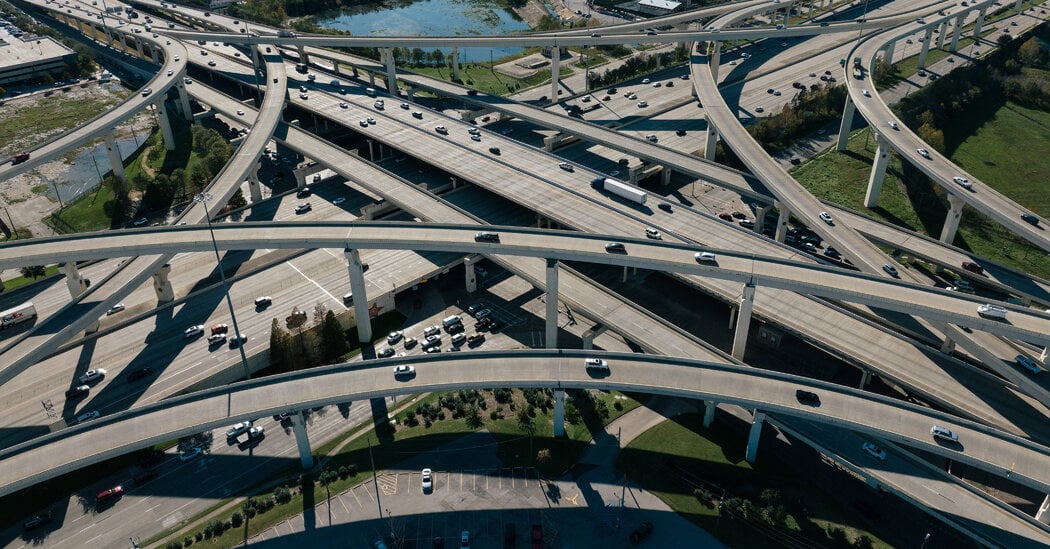For critics of widening projects, the prime example of induced demand is the Katy Freeway in Houston, one of the widest highways in the world with 26 lanes.
Immediately after Katy’s last expansion, in 2008, the project was hailed as a success. But within five years, peak hour travel times on the freeway were longer than before the expansion.
Matt Turner, an economics professor at Brown University and co-author of the 2009 study on congestion, said adding lanes is a fine solution if the goal is to get more cars on the road. But most highway expansion projects, including those in progress in Texas, cite reducing traffic as a primary goal.
“If you keep adding lanes because you want to reduce traffic congestion, you have to be really determined not to learn from history,” Dr. Turner said.



Who knew that adding complexity to a system entirely reliant on millions of autonomous drivers who only communicate with each other through lights, horns, and middle fingers would slow things down.
Lived out there for a few years and i can tell you no one is communicating through the lights on their cars.
Maybe flashing the brights
That might get you shot in Texas. It’s a low bar there.
Similar in Southern AZ, but that didn’t stop people!
Perhaps drivers who can’t understand the “complexity” of highways shouldn’t be on the road.
Exactly, it’d be great if said drivers had some compelling alternative to get around.
You, one of those autonomous drivers, going from point A to point B might not be that complex. Traffic management in a system with millions of drivers is obviously very complex.
Proud to not understand that systems can be varying degrees of complexity? Not really something to be proud of.
There are limits on how well you can train a dry nosed monkey to drive a car.
That’s not the gotcha you think it is.
Dunning–Kruger effect on display.